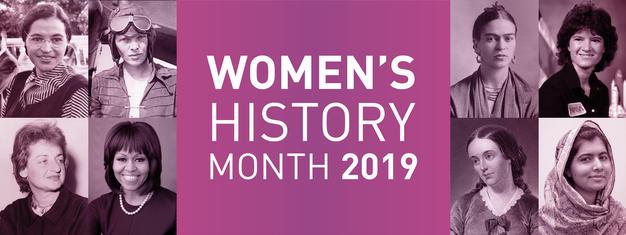
Moving Women from the End of the Chapter: The Continuing Challenges of Women’s History
Emily J. Sack -- WFRI Board Member
As a history graduate student in the early 1980s, I met with an archivist at the French National Archives to discuss my proposed research project, which related to women during the French Revolution. The archivist regretfully explained to me that in the archival cataloguing system for that time period, there was no entry for women. In order to find materials on my subject, I would have to pour through the vast collection of materials from the revolutionary period and try to identify relevant documents. As the archivist put it, I would have to look for the women. I’m sure much has changed at the Archives in the intervening decades, but the lack of a catalogue entry in this vast indexing system stayed with me. Women were not conceived of as a subject of research.
Of course, “womanless history” was just beginning to change at that time. Women’s history had started to develop as a formal discipline by the late 1970s. Due to the lobbying of women’s groups and historians, in 1980, President Jimmy Carter issued the first Presidential Proclamation declaring a week in March as National Women’s History Week, and in 1987, Congress first passed a resolution designating March as Women’s History Month. Historical studies related to women have proliferated since the 1980s, university courses on women’s history are common, and academic women’s history journals are now well established. And yes, archival sources have been indexed to make women’s history research more feasible.
All of these are important developments, but beneath the surface, not as much has happened in the recognition of women’s history as we might think. A recent report on state social studies learning standards for grades K-12, which focus on what students are expected to have learned at various grades, demonstrates that women’s history is not well-integrated in the standards; the report assumes that women’s history is even less well-represented in actual classroom teaching. The standards’ framework focuses on male-oriented “exceptional leadership,” and women’s topics are often “an addendum to the main storyline.” As my teenage stepson put it to me recently, in his social studies textbook women always seem to be at the end of the chapter.
Moreover, when there are discussions of women, they frequently focus on women of extraordinary accomplishment – women like Rosa Parks, Susan B. Anthony, or Eleanor Roosevelt – who stand out for their remarkable achievements against all odds. And while it is important to recapture the many courageous women leaders throughout our history, that is only a part of what we need women’s history to be. Over the past century, we have learned that history is not just about great individuals and political developments; rather, to truly comprehend long-term trends of history, we must study the lived everyday life of ordinary people. In this vein, it is critical that we learn and study women as they were, and to recognize the diversity of women’s experiences. We need to see what is missing from traditional history and wonder about the multitude of activities in which women participated; we need to ask“what were women doing?”
The concept of women’s history is also a recognition that the study of history is not complete without integrating women into the framework. Women are not just a topic to be “added on” to “real” history at the end of the chapter; women’s experience is integral to a comprehensive view of the social, political, and economic landscape. In this sense, women’s history is not just about women. Rather, it is an approach to history as a whole. As Dr. Gerda Lerner, a pioneering historian in the field, put it nearly 30 years ago: “For the past twenty years, we have cleared a small space for ourselves; we have opened up a window or several windows on women’s past; we have restored some lost voices and documented some distorted or forgotten events. But until we redefine the paradigm and find the true relationship between female and male actors as agents in history, we will not have succeeded.”
So, by all means let’s celebrate Women’s History Month, and recognize how far we have come in the past decades in recognizing women’s achievements. But let’s also continue to fight for the full integration of women into the study of history, and for the recognition that all history contains women’s history.

